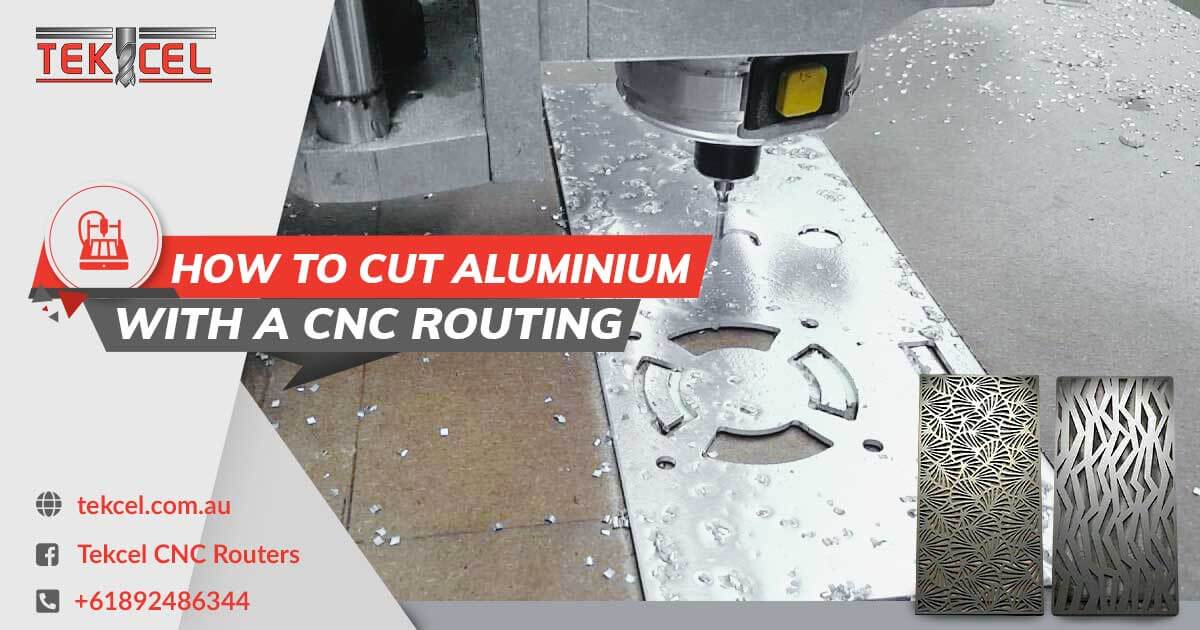
CNC routers are incredibly versatile machines, capable of cutting various materials with precision and efficiency. Among the materials they work with, aluminium stands out as a commonly cut metal, utilised in various applications, from precision components to aircraft parts. If you’re interested in learning how to cut aluminium using a CNC router, there are specific techniques and tools that can help you achieve excellent results.
However, cutting aluminium requires specific considerations, as it behaves differently than other materials. In this guide, we will explore the essential tips and techniques for cutting aluminium with a CNC router, ensuring that you achieve the best results.
One of the most critical aspects of cutting aluminium with a CNC router is determining the right feeds and speeds. Unlike wood or plastic, aluminium has a smaller “sweet spot” for optimal feeds and speeds.
Incorrect settings can lead to issues like chipping or the tool sticking during the cutting process. It’s essential to find the balance between speed and precision.
Now, let’s dive into the key question of how to cut aluminium effectively. Cutting aluminium demands finesse, and finding the ideal feeds and speeds is a fundamental step.
Cutting too slowly can cause friction and heat buildup while cutting too quickly can result in poor-quality cuts. Online feed rate calculators can be invaluable tools to guide you in setting the right parameters.
If you have any doubts, consulting a CNC expert can help you fine-tune your CNC router’s performance to match your specific project’s requirements.
When it comes to crafting precise and efficient cuts in aluminium, knowing how to cut aluminium effectively is essential. Choosing the appropriate router bits for aluminium is crucial to achieving the desired results.
While there is a variety of router bits available, carbide-tipped bits often work best when working with aluminium. These bits are well-suited to handle the high RPMs required for aluminium cutting.
Although high-speed steel (HSS) and cobalt bits may have high heat- and wear resistance, they tend to dull more quickly due to the heat and friction generated during aluminium cutting. Therefore, for consistent, high-quality results, carbide-tipped bits are the preferred choice.
Aluminum CNC routing generates high temperatures as the tool moves rapidly through the metal. To maintain cutting efficiency and extend the life of both the tool and workpiece, it is advisable to use a misting system.
This system helps cool down the bit and provides essential lubrication, reducing the likelihood of the tool sticking. The cooling effect of the misting system also preserves the integrity of the aluminium material, preventing warping or deformities.
By maintaining optimal temperatures during cutting, you can ensure consistent, high-quality results while prolonging the life of your tools and workpieces. This preservation of aluminium material’s integrity is vital for achieving precise and flawless results in your CNC routing projects.
In summary, a misting system is an indispensable tool when it comes to aluminium CNC routing. It plays a significant role in maintaining optimal temperatures during the cutting process, resulting in consistent, high-quality outcomes, and prolonging the lifespan of your tools and workpieces.
So, when you’re wondering how to cut aluminium efficiently and effectively, remember the importance of incorporating a misting system into your CNC routing setup.
Aluminium demands patience when working with a CNC router. While it may be tempting to make deep cuts to save time, this approach is not suitable for aluminium.
To achieve the best results, it’s recommended to make frequent, shallow passes, gradually reaching your desired depth. Taking your time and making shallower passes has several advantages.
It provides better chip clearance, reducing the risk of cutter damage. Additionally, it allows for more precise control over the cutting process, leading to cleaner and more accurate cuts.
For a successful aluminium cutting project with a CNC router, selecting the right equipment is crucial. Tekcel, an industry-leading manufacturer of Australian-made CNC routers, offers solutions that enable both shop owners and hobbyists to grow their production with unmatched precision and automation at an affordable price.
Tekcel’s dedication to in-house engineering and state-of-the-art facility allows them to fabricate and test designs on-site, ensuring the highest quality and performance. With a range of CNC routers and plasmas, Tekcel provides a seamless experience, even for those without formal training.
In conclusion, cutting aluminium with a CNC router is a task that requires precision, careful consideration, and the right equipment. By optimising feeds and speeds, selecting the correct router bits, using a misting system, practising patience, and choosing the right CNC router, you can achieve outstanding results in your aluminium CNC routing projects.
Whether you’re a professional or a hobbyist, Tekcel’s range of CNC routers and plasmas can help you experience the full potential of CNC technology, making your aluminium cutting projects a success from day one and beyond. Explore their offerings and elevate your CNC experience to new heights.